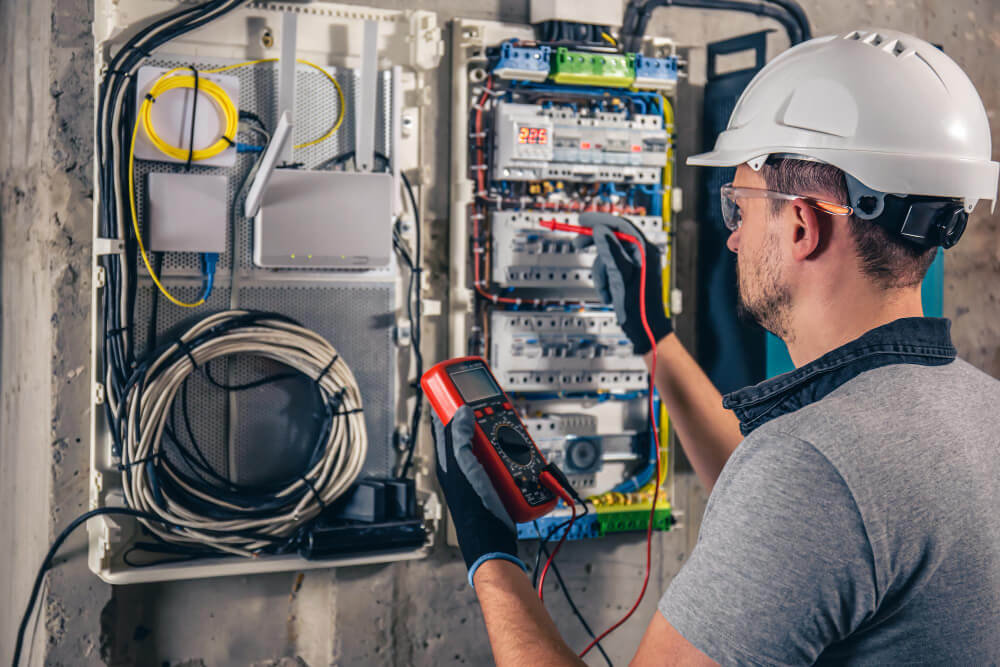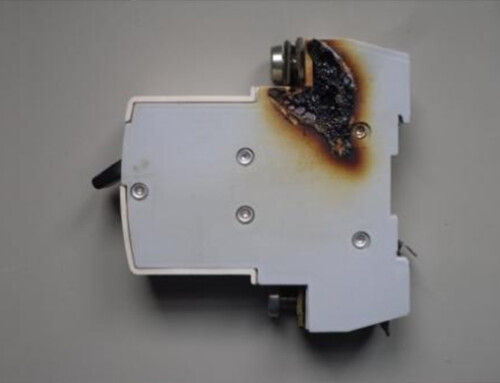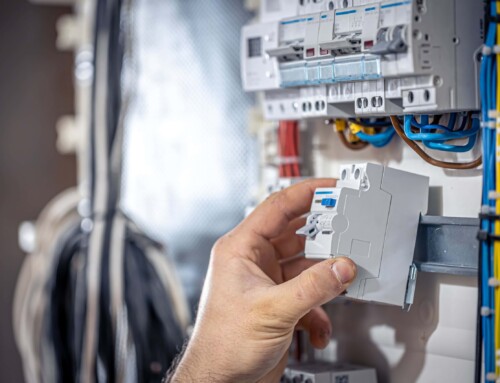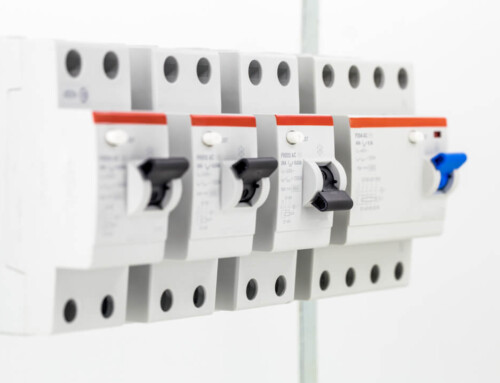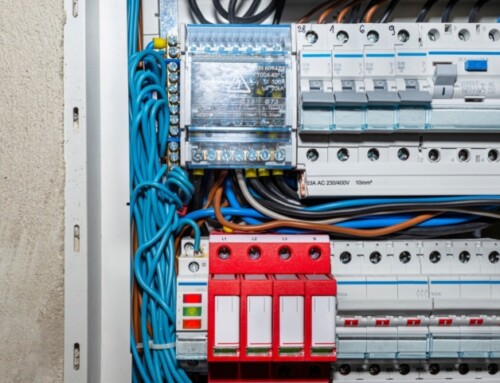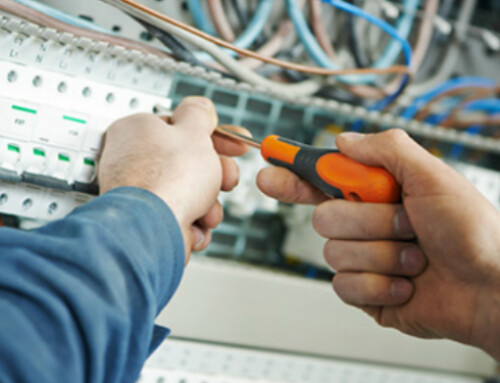Table of Contents
When it comes to home or property safety, circuit breakers are one of the most essential components of any electrical system. They protect your electrical circuits from damage caused by overloads, short circuits, or other faults.
However, with so many circuit breaker types available, it can be overwhelming to understand which one you need. This guide breaks down the different types of circuit breakers, their classifications, and how to choose the right one for your needs.
What is a Circuit Breaker?
An automatically controlled electrical switch is called a circuit breaker. It is made to stop electrical overloads and short circuits, which may result in fire dangers or damage to the circuit. Essentially, they play a crucial role in power distribution systems, serving as the first line of defense against electrical faults.
What Classes of Circuit Breakers Are There?
High-voltage circuit breakers come in several types, each with unique features to meet different electrical needs:
- Air Circuit Breakers (ACBs): Air is used to extinguish arcs, making them reliable for open environments and low- to medium-voltage applications.
- SF₆ Circuit Breakers: Utilize sulfur hexafluoride gas, providing excellent insulation and arc-extinguishing capabilities, ideal for high-voltage systems.
- Vacuum Circuit Breakers: Compact and low-maintenance, these use a vacuum to interrupt current flow, offering fast response times and minimal upkeep.
- Oil Circuit Breakers: Use oil as both a coolant and arc-extinguishing agent, ensuring durability under high-current conditions.
Each circuit breaker style has its strengths, and selecting the right one depends on the voltage levels, environmental conditions, and specific system requirements.
What are the Various Types of Circuit Breakers?
This section explains the circuit breaker types so that you can figure out which one you need to ensure the safety and efficiency of your electrical system. Check them out!
-
Low Voltage Circuit Breakers
Usually found in residential and commercial settings, low-voltage circuit breakers are rated for voltages lower than 1,000 volts. The primary kinds are as follows:
-
Molded Case Circuit Breaker (MCCB)
Circuits are shielded from overloads and short circuits by MCCBs. They are frequently used in commercial and industrial environments and have tripping settings that may be adjusted. -
Miniature Circuit Breaker (MCB)
MCBs are intended to protect household electrical panels from overload and overcurrent conditions. They are essential for home safety and are simple to reset after tripping. -
ACB, or Air Circuit Breaker
ACBs are helpful for big electrical systems where high current ratings are needed, and also belong to the low voltage group. -
Motor Protection Circuit Breaker (MPCB)
MPCBs are made especially to guard against short circuits, overload, and phase failure in motors. They are indispensable for motor applications in factories and other industrial facilities. -
Residual Current Circuit Breaker (RCCB)
By keeping an eye on the current balance between the live and neutral wires, RCCBs are able to identify and stop earth faults. Lowering the chance of electric shocks is essential to home safety. -
Arc Fault Circuit Interrupter (AFCI) Circuit Breaker
AFCIs are made to identify potentially fire-causing electrical arcs in order to prevent fires. They are becoming more and more common in contemporary home wiring systems. Just like MCB, AFCI is also a popular circuit breaker for the home. -
Ground-Fault Circuit Interrupter (GFCI) Circuit Breaker
When an imbalance is detected, GFCIs cut off the circuit to prevent electrical shock. In damp spaces like bathrooms and kitchens, they are indispensable.
-
Molded Case Circuit Breaker (MCCB)
-
Medium Voltage Circuit Breakers
Medium voltage circuit breakers, which operate between 1 kv and 36 kv, are essential components of electrical distribution networks.
-
VCB, or Vacuum Circuit Breaker
VCBs are preferred in medium voltage applications because of their minimal maintenance needs and space efficiency. -
Oil Circuit Breaker (OCB)
OCBs are dependable in outdoor environments. They are capable of withstanding a range of voltages and climatic conditions.
-
VCB, or Vacuum Circuit Breaker
-
High Voltage Circuit Breaker
High-voltage circuit breakers are crucial for the effective control of electrical power distribution since they function at voltages higher than 36 kv.
-
Circuit Breaker SF6
SF6 breakers are excellent at insulating and quenching, guaranteeing dependability in high-voltage settings. -
Air Blast Circuit Breaker
These devices’ inventive air blast mechanism allows them to manage high voltages effectively. -
Specialized HV CBs
Custom circuit breakers that address particular applications and operating needs in specialized power systems fall under this category.
-
-
Based on Tripping Features
Circuit breakers react to electrical problems according to their tripping characteristics. Based on this feature, the primary types are as follows:
-
Type B
Type B circuit breakers are perfect for lighting circuits since they trip at modest overload levels and are designed for common home applications. -
Type C
Type C circuit breakers offer a balanced approach to tripping times by serving lighting circuits and basic household appliances. -
Type D
Type D breakers are commonly employed in industrial applications. They are best suited for settings with higher inrush currents, including motors. -
K/Z type
These types of breakers are designed for certain uses, offering appropriate tripping characteristics according to particular operational requirements.
-
Type B
How Can the Correct Circuit Breaker Be Selected?
Understanding the following aspects in detail is essential to selecting the appropriate circuit breaker:
- Current Ratings: Choose according to the circuit’s maximum load capacity.
- Voltage Rating: Verify the circuit breaker’s voltage rating against the system voltage.
- Tripping Characteristics: Choose the right kind according to the possible fault conditions and load capacity.
- Environmental Variables: Take into account whether the breaker will be exposed to particular ecological conditions, whether indoors or outside.
- Safety Standard Compliance: Verify that the selected breaker complies with regional safety laws and guidelines.
Understanding the different types of circuit breakers and their applications helps ensure the safety and efficiency of your electrical system. Whether you are managing a residential property or a commercial facility, choosing the right breaker is essential.
Need help finding the best circuit breaker for your project? Get in touch with D&F Liquidators in California to speak with our experts today.
FAQs
-
What is a circuit breaker, and how does it work?
A circuit breaker is an automatic switch that shuts off electricity when it detects too much current. This helps prevent overheating, fires, and damage to your electrical system.
-
What are the different types of circuit breakers?
The main types include MCB (Miniature Circuit Breaker), MCCB (Moulded Case Circuit Breaker), RCCB (Residual Current Circuit Breaker), AFCI (Arc Fault Circuit Interrupter), and GFCI (Ground Fault Circuit Interrupter). Each one is designed to protect against specific electrical faults, from overloads to arc faults and ground leaks.
-
How do I choose the right circuit breaker?
Look at the voltage and current ratings, the environment, and the type of device you are protecting. For safety, it’s best to consult a qualified electrician.
-
Why are AFCIs important for home safety?
AFCIs prevent electrical fires by detecting arcing conditions that standard circuit breakers might overlook, providing an extra layer of protection for your home.
-
Can circuit breakers be used outdoors?
Yes, but they must be rated for outdoor use and protected against weather and moisture.
-
How often should circuit breakers be inspected and tested?
At least once a year, or as recommended by the manufacturer. Look for signs of wear, burning smells, or tripping issues.
-
What are the advantages of using circuit breakers over fuses?
Unlike fuses, circuit breakers can be reset after tripping, making them safer and more convenient.

